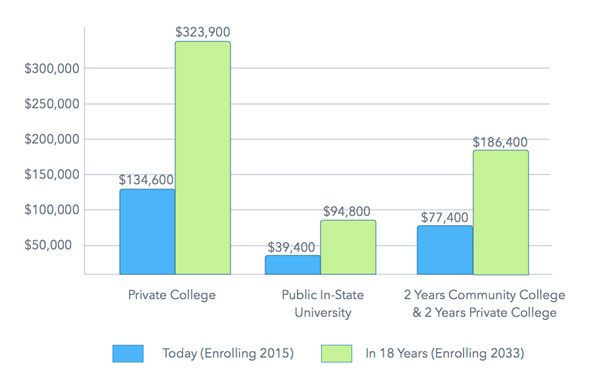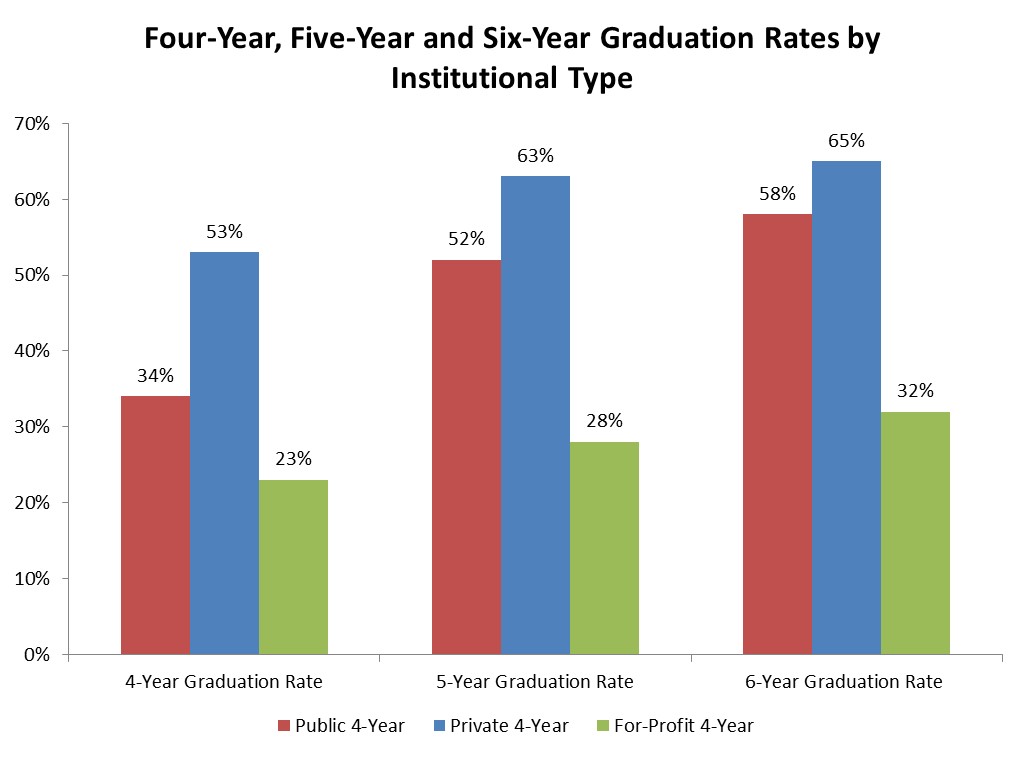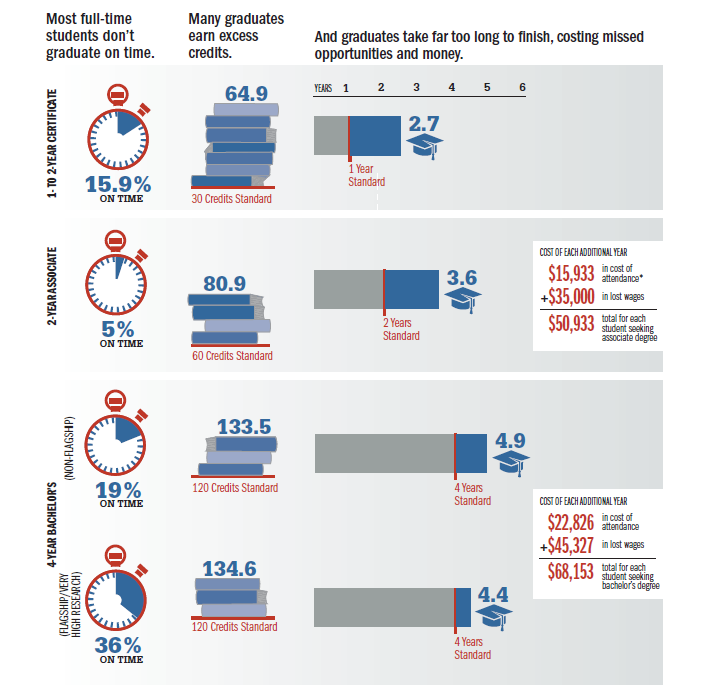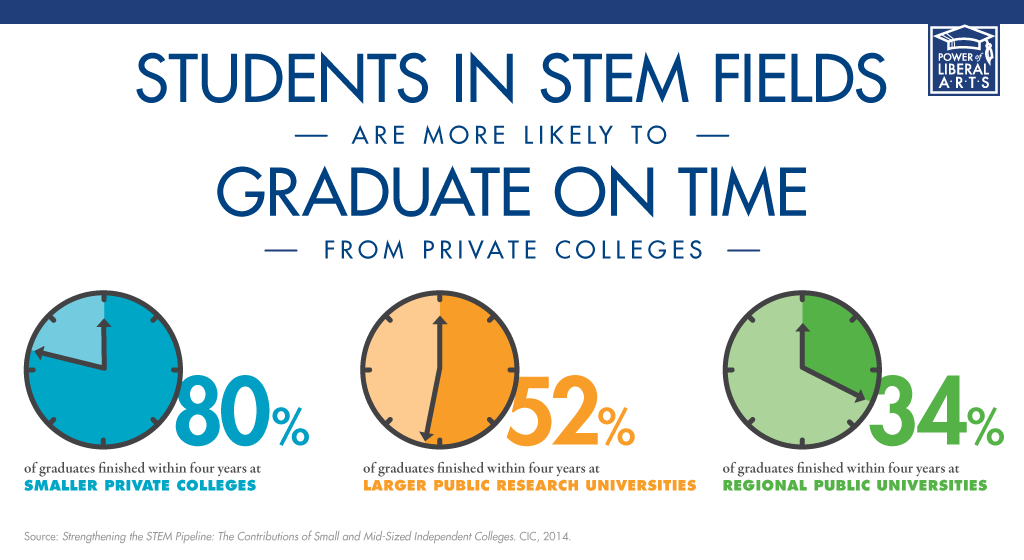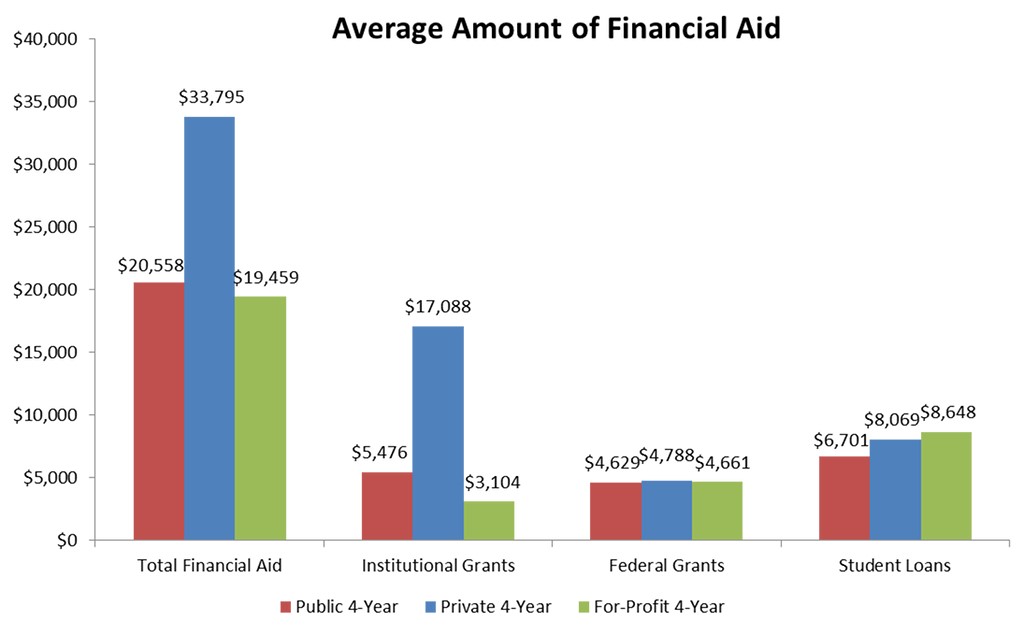
For those looking to obtain an undergraduate degree, one of the biggest considerations that come into play when choosing a school is cost. For most, that means looking at the cost of yearly tuition, fees and room and board. This, however, creates a false picture of what the actual cost of obtaining that undergraduate degree will be. What you need to know is the Total Cost of Graduation (TCOG) and to determine that you will need to take much more into consideration.
It is no wonder that when looking at colleges parents and students do not look far beyond the published costs associated with each school. They are, after all, the only factors that many publications and guides outline as important. Take for example the article The Real Cost of Higher Education that published on SavingforCollege.com. They outline just tuition and fees as the ‘real cost of higher education.’
Projected 4-year average tuition and fees: 2015 and 2033
By looking at this chart, you would think that attending a Public In-State University is the most affordable option for obtaining your undergraduate degree. However, that is not necessarily so. Here is why: they are failing to factor in the fact that the vast majority of full-time college students do not complete their degree in four years.
At public institutions, just 1 in 5 students graduates on time. The number increases to 1 in 3 at flagship universities. At private colleges, however, the rate increases to over 50%.
So, right off the bat, you can see that for many institutions you need to factor in, at a minimum, an additional year of tuition, fees and room and board, which on average costs $22,826. In addition to that cost, you also need to factor in the lost wages that would have been earned if the student were to graduate and enter the workforce. That number averages $52,569, bringing the total additional cost to $75,395. But it does not end there. You also need to factor in the additional costs of financing the extra year, which includes fees and interest rates. Then add on costs associated with starting a career later in life (delayed promotions, delayed retirement, etc.). It really adds up!
Something else to consider when looking at the total cost of graduation is the major that you are considering. Some majors have a higher graduate on time rate based on the type of institution. For example, students in STEM fields are more likely to graduate on time from a smaller private college (80%) versus a larger public research university (52%) or regional public university(34%).
Another variable that should be considered when determining the TCOG is financial assistance in the form of scholarships and grants. Private colleges typically award more in financial aid, grants and loans as public universities. This weighs heavily not only in the final cost of attendance but the amount that is financed through student loans and ultimately incurs interest charges.
Notes: Percentages are for first-time, full-time undergraduates in aid programs during academic year 2013–2014. “Total Financial Aid” category includes aid listed as well as state and local grants. Analysis by the Council of Independent Colleges.
As you can see, determining the total cost of earning your undergraduate degree hinges on so much more than just the standard costs so many consider. For those in the process of choosing a school, do your due diligence and research the schools you are considering to find out how they stack up against each other. There is a great comparison tool at www.collegeresults.org that allows you to see all the information you need to know, including graduation rates, tuition, financial aid and more.
